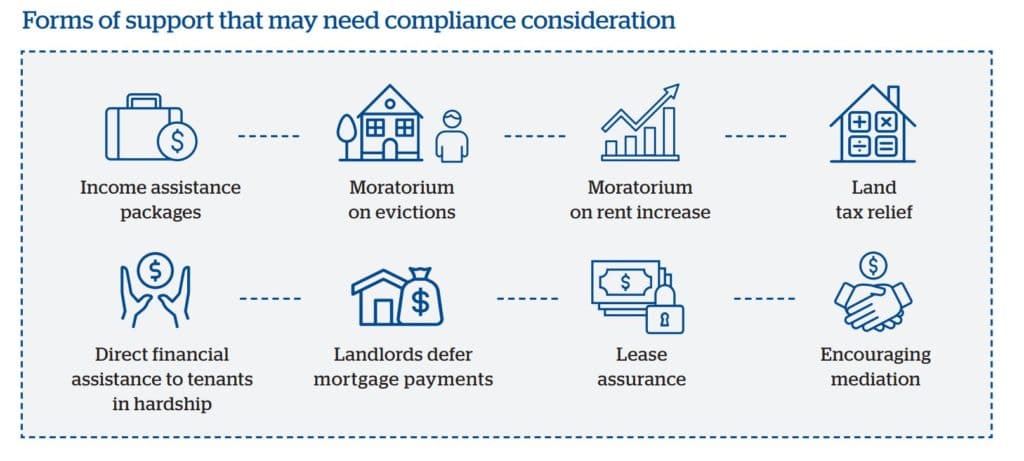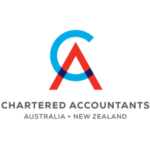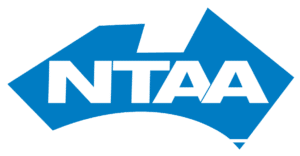Matters Covered in This Article
COVID-19 payments and some issues for companies and trusts
With many having received cash flow boost and JobKeeper payments, there can arise some unique issues where these amounts are received within a trust or company.
COVID-19 and trust liquidity issues
The ATO has highlighted the fact that due to COVID-19, a trustee may experience liquidity issues that may affect a trust’s ability to satisfy a beneficiary’s entitlement. This may happen where financial institutions impose restrictions that affect the way a trustee can deal with its assets.
Where you stand with vehicles and the boosted instant asset write off
The extension of the instant asset write-off from $30,000 to $150,000 until 31 December 2020, as part of the Federal Government’s COVID-19 stimulus measures, provides an opportunity to look at its application to motor vehicles.
COVID-19 payments and some issues for companies and trusts
The cash flow boost and JobKeeper payment have been flowing to eligible businesses for some time now. These stimulus payments have differing tax treatments, which are:
- the cash flow boost is paid as a credit and is nonassessable non-exempt income, and also free from GST (because it does not represent consideration for a supply)
- the JobKeeper payment is paid directly into a recipient’s nominated bank account on completion of monthly reporting obligations. JobKeeper is assessable income, not subject to GST, and not included in activity statements.
Trust distributions
What constitutes trust income is determined by the trust deed or by the trustee where permitted under the trust deed.
It is a common misconception that the trust income available for distribution is equal to the taxable income of the trust. However, this will only be the case where the trust deed defines trust income to equal taxable income, or the trustee, where discretion permits, determines that to be the case.
Cash flow boost
When considering payments received under the cash flow boost, if the trust deed or the trustee determine that non-assessable nonexempt income does not form part of trust income, the cash flow boost will not be distributable. However, where such overt restrictions are not present, or where the trust deed or the trustee determine that non-assessable nonexempt income can be distributed, the cash flow boost may be available for distribution to the beneficiaries.
JobKeeper
JobKeeper payments will form part of the taxable income of the trust and would be expected to also be trust income as may be defined by the trust deed or the trustee. Where JobKeeper is received for eligible employees, the amount paid to the employees, and therefore the associated expense/deduction must be equal to or more than the amount of JobKeeper payment. Therefore, no net trust or taxable income would arise. However, JobKeeper amounts received for eligible
business participants do not need to be paid to the eligible business participant, as the wage condition does not apply. Therefore, the amounts could be retained within the trust and form part of the trust income distributed at year end.
Franking credits
As the cash flow boost amounts are non-assessable non-exempt income, no tax arises on these amounts and it follows that no franking credits will be generated by these amounts. Whether the boost amounts can be paid out as a franked dividend by the recipient company will depend on the balance in the franking account of the company involved and the amount of its accumulated profits.
Company beneficiaries
A key plank of the JobKeeper payment is that a minimum of $1,500 per fortnight
amount must be paid to employees (which is then reimbursed to the employer at month-end). However, where the recipient of an amount is an eligible business participant, there is no requirement for the amount to be paid to that individual. Instead, it can be retained in the company or trust as the case may be. Where a trust does retain the amount, it will then form part of the trust law income to be distributed by the trust to any beneficiary at year-end (see earlier). Where a trust receives JobKeeper payments and distributes these amounts to a company beneficiary, this can have consequences as to whether that beneficiary then qualifies as a base rate entity for the purposes of qualifying for the lower company tax rate. To recap, to qualify as a base rate entity, a company must not only have an aggregated turnover of less than $50 million, but no more than 80% of its assessable income can be base rate entity passive income. This income consists of the following:
- (a) corporate distributions and franking credits on these distributions
- (b) royalties and rent
- (c) interest income (though some exceptions apply)
- (d) gains on qualifying shares
- (e) net capital gains, and
- (f) an amount included in the assessable income of a partner in a partnership or beneficiary of a trust, to the extent that it is traceable (directly or indirectly) to an amount that is base rate entity income under
categories (a) to (e).
Trust distributions received by corporate beneficiaries need to be dissected into their base rate entity component, and their non-base rate entity component.
In this case of cash flow boost, it would not count as assessable income in any case and therefore would be disregarded for the purposes of the 80% test. On
the other hand, JobKeeper is assessable income, but not passive income for the purposes of the 80% test. Therefore, the JobKeeper component of trust distributions to a company will improve the chances of the company meeting the 80% test (because it will be assessable income, and not base rate entity passive income). It will therefore qualify the company as a base rate entity for the purposes of accessing the lower 27.5% corporate tax rate (decreasing to 26% from 2020-21).
JobKeeper amendments
There have been some changes made to JobKeeper since our last newsletter. Businesses will need to meet one of the declines in turnover tests for the September 2020 quarter alone (rather than for both the June and September quarters as announced in July) to be eligible for JobKeeper for the period 28 September 2020 to 3 January 2021. Beyond that, businesses will have to meet the decline in turnover tests for the December 2020 quarter to be eligible for JobKeeper for the period 4 January to 28 March 2021. For the eligible employee test, the reference date for assessing which employees are eligible for JobKeeper is now 1 July 2020 (previously 1 March) with effect from fortnight 10 (3 August 2020). The reference period for employees regarding their hours worked to determine their tier of payment will be the two fortnightly pay periods prior to 1 March 2020 or 1 July 2020. The period with the higher number of hours is to be used for employees who were eligible at 1 March 2020. The ATO had already extended the wage condition deadline to 31 August for fortnights 10 and 11.
Business can claim previous year tax losses
If your business has made tax losses in years to the current one, but you haven’t yet offset all those losses, you can still carry these forward and claim a deduction for them in a later year — as long as you meet all the requirements of the tax law. Your business structure will affect how you can claim business tax losses from the current year or previous years. If you are:
- a sole trader or an individual partner in a partnership, you can generally offset your current or prior year business losses against other income in the same income year (subject to the non-commercial business loss rules that may prevent you from doing so);
- operating your business through a trust, losses must be carried forward by the trust indefinitely until they are offset against future trust income (they cannot be distributed to beneficiaries) – and, furthermore, there are strict requirements that must be met for the trust to be able to use the losses itself;
- operating through a company, you must meet fairly onerous “continuity of ownership” tests or the “same business” test in order to be able to claim current and/or prior year losses.
It is important to be aware that the ATO expects taxpayers to consider each tax loss separately if you are looking at more than one tax loss across multiple years.
If you carry forward a prior year business loss to the current year or a future year, make sure you have correctly applied your past business losses before lodging a tax return. Check that:
- you have accurately reconciled carried forward losses from a prior year to a later year (errors can occur when poor record keeping of losses accumulate)
- you haven’t mis-characterised expenses such as capital expenditure and CGT losses as normal business expenses (because, for example, CGT losses can only be offset against CGT gains)
- if your business is a specific entity, such as a private company, that you have considered the relevant tests linked to same or similar business tests when applying prior year losses to a current year, where the business ownership or the nature of the business activity has sufficiently changed (as indicated above).
Remember, we are here to help if you have any questions about claiming business losses.
COVID-19 and trust liquidity issues
The ATO has highlighted the fact that due to COVID-19, a trustee may experience liquidity issues that may affect a trust’s ability to satisfy a beneficiary’s entitlement. This may happen where financial institutions impose restrictions that affect the way a trustee can deal with its assets.
The ATO states that where a present entitlement arose before any effect of COVID-19, in circumstances that were not a reimbursement agreement, trustees may need to make subsequent arrangements to meet the requirements of the financial institution. If that occurs, these arrangements will not invalidate that entitlement nor trigger other taxation impediments.
“For present entitlements conferred at the end of the last tax year, the law will apply based on the facts presented,” it says. “We won’t undertake compliance action to consider the validity of an entitlement … in circumstances where a trustee is affected by liquidity issues due to COVID-19 and unable to satisfy the entitlement.”
The ATO also reminds trustees of the importance of complying with the terms of their trust deeds. It says that for cases under review, it will continue to apply the law. Further, the ATO says that its compliance approach is intended to provide relief and certainty to trustees and associated private groups who experience genuine liquidity difficulties as a result of COVID-19, and assures affected parties that it will monitor behaviour to ensure this approach works as intended.
Where you stand with vehicles and the boosted instant asset write off
The extension of the instant asset write-off from $30,000 to $150,000 until 31 December 2020, as part of the Federal Government’s COVID-19 stimulus measures, provides an opportunity to look at its application to motor vehicles.
Note that in addition to the higher write off amount, the business turnover threshold test for eligibility was increased to also apply (from March 2020 until 31 December 2020) to businesses with an aggregated turnover of less than $500 million.
As with all assets that are eligible for the instant asset write-off, the vehicle must be first acquired between 2 April 2019 and 31 December 2020 and must be “used or installed ready for use” in a business from 12 March 2020 to 31 December 2020. This means, for example, that if the taxpayer purchases the vehicle in the income year ended 30 June 2020, an instant asset write-off deduction will not be available in that income year unless it was also “first used or installed ready for use” in a business in that same income year.
What it means for a vehicle to be “used or installed ready for use” will be a question of fact depending on the nature of the vehicle and the business in which it is used (and will, presumably, at least require the vehicle to be registered and located on the business premises in a workable state).
However it must be emphasised that there is a car limit that applies to the maximum amount of instant asset write-off deduction that can be claimed. For the 2019-20 income tax year, this amount is $57,581. For the 2020-21 income year this amount is $59,136.
For these purposes, a car is defined as a vehicle designed to carry a load less than one tonne and fewer than nine passengers (which means the car limit will not apply if the vehicle carries a load of one tonne or more or carries nine passengers or more).
Furthermore, the one tonne limit relates to the maximum load of the vehicle (that is, the payload capacity), which is the vehicle’s gross vehicle mass reduced by its basic kerb weight. This is the vehicle’s weight with a full tank of fuel, oil and coolant plus the spare wheel, tools (including jack) and any factory-installed options (but excluding the weight of passengers, goods or accessories). This test is relevant to the purchase of a dual cab ute that is also often designed so it can be put to family use as well.
The car limit applies to the “first element” of the cost of the vehicle — which basically means that “second element” costs are essentially later capital improvements made to the vehicle that are incurred after beginning to hold the vehicle for income use. These however may also be entitled to the instant asset write-off deduction in their own right, and would be the case whether they are incurred either in the same income year in which the vehicle is purchased (as the instant asset write-off applies to multiple assets) or in a later income year.
But it should also be noted that as the car limit applies to the first element of the cost of the car, any second element cost expenditure that, say, increases the carrying capacity of the car to more than one tonne does not affect the original application of the car limit to the original purchase of the vehicle.
Other matters to note include:
- You cannot claim the excess cost over the car limit that is denied the instant asset write-off deduction under any other depreciation rules or the general deduction provisions.
- With all assets eligible, the instant asset write-off deduction is limited to the business portion use of the car in the income tax year (for example, using the car limit of $57,581 for the 2019-20 income tax year, if the vehicle is used 60% for business use, the total amount that can be claimed under the instant asset write-off in that year is $34,549 – being 60% of $57,581).
- You cannot claim both the instant asset write-off in respect of a vehicle (or any asset) and the 50% accelerated depreciation rate for the same vehicle.
COVID-19 and SMSF rental relief
The Federal Government announced a six-month moratorium on evictions of commercial and residential tenants during the COVID-19 health pandemic. This moratorium (and its accompanying code of conduct leasing principles) will inevitably affect SMSFs, which are reasonably heavily invested in real property, according to statistics.
Leasing principles
A moratorium on evictions means that SMSF landlords face the real prospect of tenants falling behind on their rent. However, this does not mean that the tenant is not required to pay rent during the moratorium period. Rather, broadly speaking, parties are encouraged and indeed required to negotiate a rental reduction, deferrals, or rent-free periods if the tenant needs. In terms of commercial rents, a mandatory code has been developed and applies if a tenant or landlord is eligible for JobKeeper payments and has a turnover of less than $50 million. The code includes a common set of principles that must be adhered to, including:
- landlords must not terminate leases for nonpayment of rent during the COVID-19 pandemic (or reasonable recovery period)
- tenants must stay committed to their lease terms (subject to amendments)
- landlords must offer reductions in rent (as waivers or deferrals) based on the tenant’s reduction in trade during COVID-19
- benefits that owners receive for their properties (eg reduced charges, land tax, deferred loan payments from banks) should be passed on to the tenant proportionately.
However, granting rental relief – where not carefully justified and documented – can present considerable compliance risks for SMSF landlords. This includes fines of up to $12,600 per trustee and/or in serious instances the SMSF being deemed non-complying, in which case the value of its assets as at the commencement of the income year could be taxed at 45%.
Non arm’s length tenants
Where the property is held by the SMSF and the tenant is a “related party” of the SMSF trustee, unless care is taken, evidence gathered, and the arrangement is properly documented, there is a real risk that, in granting rental relief, breaches of the following provisions of the SIS Act may result.
- The sole purpose test. In granting rental relief, the SMSF trustee may not be deemed to be acting with the sole purpose of maximising the retirement benefits of members of the fund, but rather acting to assist the related party with their rental expenses.
- The arm’s length test. In granting rental relief to a related party, it may be considered that the fund is not maintaining all investments and transactions at arm’s length, in the same way as they would deal with an unrelated party.
- In-house asset test. In providing rent relief, is the SMSF providing a loan to the related party tenant? In the unlikely event that this loan exceeds 5% of the value of the fund’s assets, the fund can be deemed to be non-complying.
- Prohibition against lending or providing financial assistance to a member or relative. In granting relief to the tenant member or relative, could it still be said that the arrangement is still on commercial or arm’s length terms so as to avoid being deemed “financial assistance”?
It is, however, important to note that the ATO updated its auditor/actuary contravention report (ACR) instructions for the 2019-20 income year to state SMSF auditors will not be required to report in the ACR breaches of the sole purpose test and in-house provisions that may occur as a result of COVID-19 rent relief measures.
Arm’s length tenants
Although the risk is less acute, with potentially only the sole purpose test in play, the same careful evidence gathering and documentation is recommended where rental relief is granted to a party who is not related to the SMSF trustee. Unless it can be demonstrated that the relief granted was actually still in the broader interests of the SMSF, then a breach of the rules is a possibility.
Justification
To establish a strong case for granting rental relief, SMSF trustees should obtain sufficient evidence including the following where applicable:
- The financial circumstance of the tenant. In terms of evidencing this, it may take the form of:
Their eligibility for JobKeeper (which itself requires evidence of a downturn in turnover)
Year-to-date financial statements
Cashflow forecasts
A report from the tenant’s registered tax agent that the tenant is experiencing COVID-19- related financial difficulties that may impact their ability to pay the agreed rate of rent
- Government restrictions that may impact the tenant long-term, such as those imposed on large restaurants where, even when they are permitted to open, social distancing requirements in the venue may still nonetheless impact capacity and profitability
- Any comparable rental relief that is being offered by arm’s length landlords to their tenants
- The difficulty in leasing out the property to a new tenant, should the current tenant default on the lease. The location of the property, or the type of property may mean that retaining the current tenant – even with rental relief – is in the long-term best interests of the SMSF, particularly where the current tenant has an otherwise good history in terms of paying on time and looking after the property
- to the above point, if the property was untenanted, it may be more difficult to obtain insurance cover. Additionally, untenanted properties are arguably more vulnerable to break-ins and natural deterioration/rundown.
It is important that any rental relief that is granted is proportionate to the above, and that the new arrangement is properly documented by amending the lease agreement between the parties, including the reasons for any reductions. In summary, where the related-party lender provides any relief to the SMSF that is not comparable to an arm’s-length arrangement (that it may offer unrelated parties in these fraught economic times), then the ATO may then apply the non-arm’s length rules to tax any net income or future capital gain from the property (for the entire future period of ownership) at the top individual marginal tax rate. Whether these provisions are applied may ultimately depend on whether the SMSF can justify with documented evidence that the decision to alter repayment terms is done on a commercial basis as if the parties were unrelated.

This information has been prepared without taking into account your objectives, financial situation or needs. Because of this, you should, before acting on this information, consider its appropriateness, having regard to your objectives, financial situation or needs.




